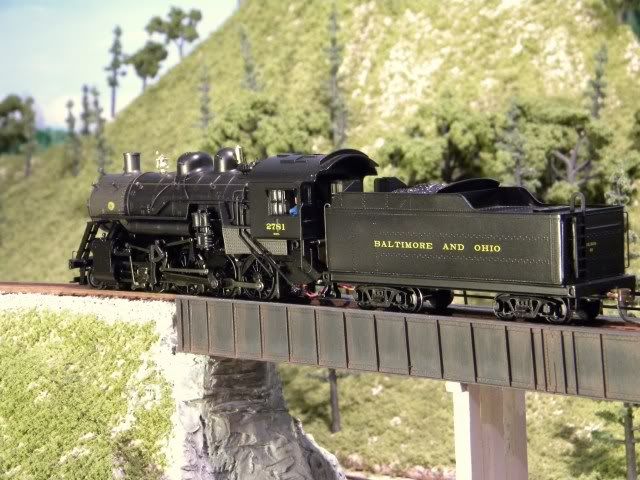Well, here I sit on a Friday night. The kids are at Nana's, my wife is upstairs playing something called 'bunko' (sp), and what am I doing? Making trees! Yes I said I would take a break.... but I'm procrastinating. The time has come to consider lights and signals for my layout. The structures are nearly done. I have 'repaved' the streets and parking lots. The trains are running fine. So it's time for lights. I knew this moment would come. So.... here are my questions. I am a little ignorant on electricity. I have read this forum, Wiring Made Easy, and a host of other on line advice on lights to prepare, but the truth is I just want to keep it simple. Here's what I want to do, please show me the error of my ways:
I have four accessory connections (AC) available from four transformers for my DC system. I want to run lengths of wire under my layout from the AC outputs. Then, I want to connect any lights I use in 'parallel?' along those lengths of wire. Is that connecting to a bus? I wish to continue connecting to the same length of wires until the lights start to dim. Then I'll use the second accessory output to wire more lights until THEY start to dim, and so on and so on. My head hurts from trying to figure out voltage, milliamps, resistors and the like. It seems to me, if my LHS sells a light for my layout, they ought to work without having to worry about blowing up a bulb right away. Am I naive? Again, to keep it simple, will that work? I am planning street lights, as well as interior lights for my buildings, and oh yes, some tower lights for my freight yard.
Also, I want a crossing signal where my road crosses the tracks. I like the NJ International lighted crossbucks with gate. I won't even think about operating the gate, but I want to make the signals flash. Can I hook the flasher unit up to my accessory wires as well? Do I need a toggle to turn these things off and on?
If I'm on track so far, The final question is, with four accessory outputs, do I have enough juice to run a few dozen leds or GOWs plus a crossing signal?
Sorry for rambling. Here's a pic for being so kind as to read this.
Regards,
Jonathan

I have four accessory connections (AC) available from four transformers for my DC system. I want to run lengths of wire under my layout from the AC outputs. Then, I want to connect any lights I use in 'parallel?' along those lengths of wire. Is that connecting to a bus? I wish to continue connecting to the same length of wires until the lights start to dim. Then I'll use the second accessory output to wire more lights until THEY start to dim, and so on and so on. My head hurts from trying to figure out voltage, milliamps, resistors and the like. It seems to me, if my LHS sells a light for my layout, they ought to work without having to worry about blowing up a bulb right away. Am I naive? Again, to keep it simple, will that work? I am planning street lights, as well as interior lights for my buildings, and oh yes, some tower lights for my freight yard.
Also, I want a crossing signal where my road crosses the tracks. I like the NJ International lighted crossbucks with gate. I won't even think about operating the gate, but I want to make the signals flash. Can I hook the flasher unit up to my accessory wires as well? Do I need a toggle to turn these things off and on?
If I'm on track so far, The final question is, with four accessory outputs, do I have enough juice to run a few dozen leds or GOWs plus a crossing signal?
Sorry for rambling. Here's a pic for being so kind as to read this.
Regards,
Jonathan


